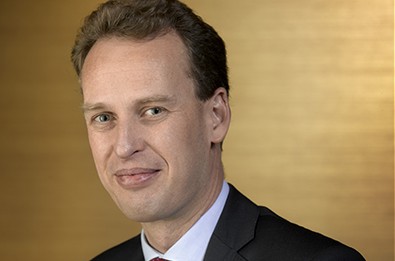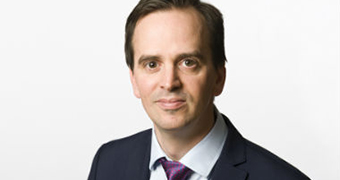At his keynote speech at the Global Capital Sustainable & Responsible Markets Forum, Frank Elderson, first Chairman of The Network ON Greening the Financial system (NGFS). shed his light on the ways central banks are contributing to the greening of the financial system. He gives an insight into their work and progress. And he describes how therir activities fit within the broader context of international developments in this area.
Role central banks
I don’t need to tell you that we face a climate problem. You all know that at the end of 2015 the international community came together to sign the Paris climate deal. It is clear we have to be greener. Clearer still is that this must be a joint effort. Globally. Across all sectors and segments of society.
It’s not just up to the end consumer to pick green energy over brown, or the utility company to provide green energy. Or the bank to finance the green utility company. It needs a concerted effort from all parties. But bringing about a green transformation requires enormous investment. And that means the financial sector – which is you, my friends! – has a crucial role in channeling its resources towards a green and sustainable economy. And that is why there is an overwhelming case for supervisors and central banks to respond to environmental challenges. From the perspective of both risk and opportunity.
Let me address the risk side first. Because as a supervisory authority, we tend to focus on risks. We are very sensitive to all types of risks to the stability of financial institutions, or to the system as a whole. So we also need to look at climate-related risks: we must assess how the physical effects of changing climate, like extreme weather events, can translate into financial risks for the institutions we supervise.
The same goes for risks that can arise from the transition to a low carbon economy. This transition may lead to stranded assets and policy risks, which in turn can mean financial risks for the institutions we supervise. We aim to identify these risks. And where possible to manage, resolve or even mitigate them.
(…)
Background and membership of NGFS
These developments laid the foundation for setting up the network of central bank and supervisors at the end of last year, the NGFS. (You remember, the network for greening the financial system …). It brings together institutions that are determined to move forward on green finance and climate-related risks.
Within the network we share experiences and best practices. This means we don’t all have to reinvent the wheel and are able to join forces.
Since its launch in December 2017, the NGFS has experienced a rapid growth in terms of new members and observers. There were eight founding countries to begin with. But as chair I am proud to say we now have seventeen members and five observers. Hopefully, there are many more to come. And our members come from across the globe. It is not just a European party. No. All continents are represented. China, Singapore and Mexico were three of the founding members, as well as for example France and the UK.
This summer, the ECB, including the SSM, the Single Supervisory Mechanism, came on board. I expect this to have a major effect within Europe. The SSM directly supervises all one hundred and nineteen significant banks in the euro area and also indirectly supervises the less significant banks in this area. That means all countries in the banking union are indirectly linked to the NGFS.
Members demonstrate a strong collective commitment to the greening of the financial system. They are taking up their responsibility to contribute to the implementation of the Paris Agreement. Now you might be thinking, what do we actually do? What impact are we trying to achieve?
Activities
NGFS members voluntarily exchange valuable experiences and best practices on climate risk analysis and mitigation tools. These activities are structured around three workflows: microprudential supervision; macrofinancial issues; and scaling up green finance.
In terms of microprudential supervision, we study and identify best practices of central banks and supervisors in analyzing climate-related risks affecting individual institutions. We map current supervisory practices for integrating environmental risks into micro-prudential supervision. This forces individual institutions to consider the impacts on their balance sheet. We also review current practices on environmental and climate information disclosure by financial institutions so we can identify best practices.
Secondly, we attempt to quantify the physical and transition risk at a macroeconomic level. Here, we will identify examples of good practices by NGFS members. These include for example macro stress tests or scenario analyses.
Our last area of focus is the role of central banks in scaling up green finance. We discuss current practices for incorporating ESG criteria in all areas of central bank operational activities. Against this backdrop, the NGFS will organize the seminar ‘Sustainable & Responsible Investment for central banks’. The event will be hosted here at DNB, on the 21st of September. Then, we will discuss best practices and principles for integrating sustainability considerations into management of official reserves.
Concrete examples
This might still sound a bit abstract in terms of what it could mean for you, for the financial sector. So let me return to the first area of activity: how can supervisors integrate climate risk into supervision? Last year, DNB examined the exposures of financial institutions to carbon intensive sectors. We published our findings in a report titled ‘Waterproof’. This gave us a good indication of the vulnerabilities in a hard transition scenario. We also looked at how new types of national policy could cause financial risks to materialize already in the shorter term.
A good example of this is in the Dutch commercial real estate sector. In the Netherlands, as of 2023, all office buildings will have to meet minimum energy efficiency requirements, or face closure. In 2017, it was estimated that half the offices in the Netherlands did not meet this requirement. This raises the prospect of write-offs for lenders. As I said, I strongly believe in predictable, transparent public institutions. This example shows how new policies to achieve our Dutch carbon emission goals require transparent implementation, to avoid sudden shocks.
Annual data requests, as part of our supervision, could give greater insight into the size and nature of the risk. This can form the basis for supervisors to engage in dialogue with institutions. We may then expect them to prepare a strategy for integrating ESG risks in their short and longer term risk analyses. To explain how they can adapt their investment strategy to align with the Paris ambition. And to demonstrate they have a clear view on the viability of their business model in a two degree scenario.
(…)
Timelines NGFS
Standing here now, I must say I’m very proud of the network’s progress. Ten months ago, the acronym NGFS still sounded odd. But today, we are right back on track and more and more countries are queuing up to board the train. It may run on only partly renewable sources at the moment, but hopefully in the near future it will be fully powered by certified green energy! And you will be able to assess the extent to which we succeed. The analysis conducted in the work streams will feed into a NGFS report to be issued in the first half of 2019. The final purpose is to define and develop best practices and promote these such so they will be implemented within and outside of the membership of the NGFS.
Conclusion
NGFS and DNB need to demonstrate they can support, underpin and promote the transition to a green financial system, as part of their regular mandate. And while our research on a possible future supervisory framework will continue, we’re excited by the initiatives that you, the private sector, have taken to model the risks and transform the financial markets. I believe you can drive innovation and might even be able to provide a more significant lever to advance global change. However, at a time of rapid change it is also important to analyse innovation within the public sector so as not to create new risks. So therefore, we hope to continue our dialogue and work on this challenge together.
Or, in other words, as we are now in the ‘Grand Ballroom’ of the Okura hotel: Together, let us face the music and dance. Let’s dance together!
The full version of the speech you can read on the website of the DNB.
Source: https://www.dnb.nl
"Lets dance"
11 September 2018






